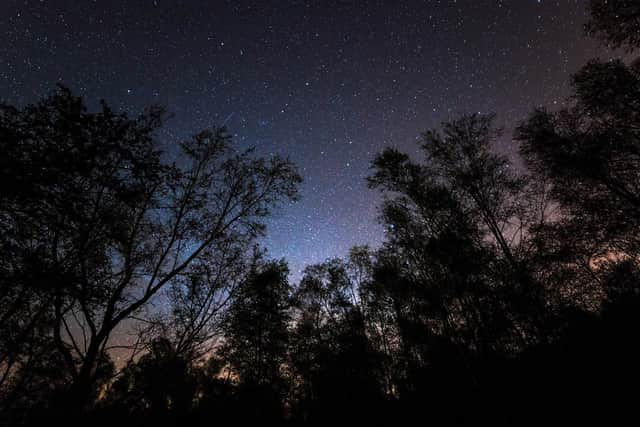Have you seen the moving lights in the night sky? Here's what they are ... and you can also spot a meteor shower
and live on Freeview channel 276
Since Sunday, there has been a dazzling moving lights show which has puzzled many across the area.
The source of the display has been revealed as Starlink – Elon Musk's Space X project.
Advertisement
Hide AdAdvertisement
Hide AdThe lights are in fact from satellites involved in the entrepreneur’s scheme to create a constellation of thousands of low-orbit small satellites to improve internet service.


There are websites and apps which allow people to track the line of satellites.
They are expected to be visible until Friday and to be visible above Scarborough and the coast from around 9pm tonight.
Meanwhile, budding astrologers can also be on the lookout for Lyrids meteor shower, which rolls into Earth’s skies for its annual display for the coming nights.
Advertisement
Hide AdAdvertisement
Hide AdThe shower is not one of the year’s most spectacular, but can still provide those looking skyward with upwards of 20 shooting stars per hour.
It takes place until April 25 but will be at its most dramatic on Wednesday April 22.
The Lyrids are so called because they appear to radiate from the constellation of Lyra, and the shower will be at its most active once this "radiant" has risen - around 9pm to 10pm in the north-east of the sky.
If you're able to venture out into your garden to spot the show, wrapping up in warm clothes is recommended, and you should allow up to 20 minutes for your eyes to fully adjust to the night sky.
Advertisement
Hide AdAdvertisement
Hide AdThere will be an added advantage to stargazers this year, with the peak of the shower lining up with a new moon, meaning minimal light pollution from our planet's only natural satellite.
The Lyrids are one of the oldest known meteor showers, with records dating back 2,700 years. The ancient Chinese are said to have watched Lyrid meteors falling “like rain" in the year 687 BC.
The Lyrids are caused by the interaction of the Earth’s atmosphere with the dust trail left by the Comet C/1861 G1 Thatcher.
When particles of debris enter the Earth’s atmosphere, they burn up, producing a trail of light across the sky.
Advertisement
Hide AdAdvertisement
Hide AdComet C/1861 G1 Thatcher only orbits the sun every 415 years, but occasionally, specific planetary arrangements can steer the dust trail into Earth’s path, intensifying the shower.
This happens roughly every 60 years, and while it won't be the case in 2020, observers could still be treated to some ‘Lyrid fireballs’ - brighter meteors that can even cast shadows for a split second and leave behind a trail of glowing ionized gas.
